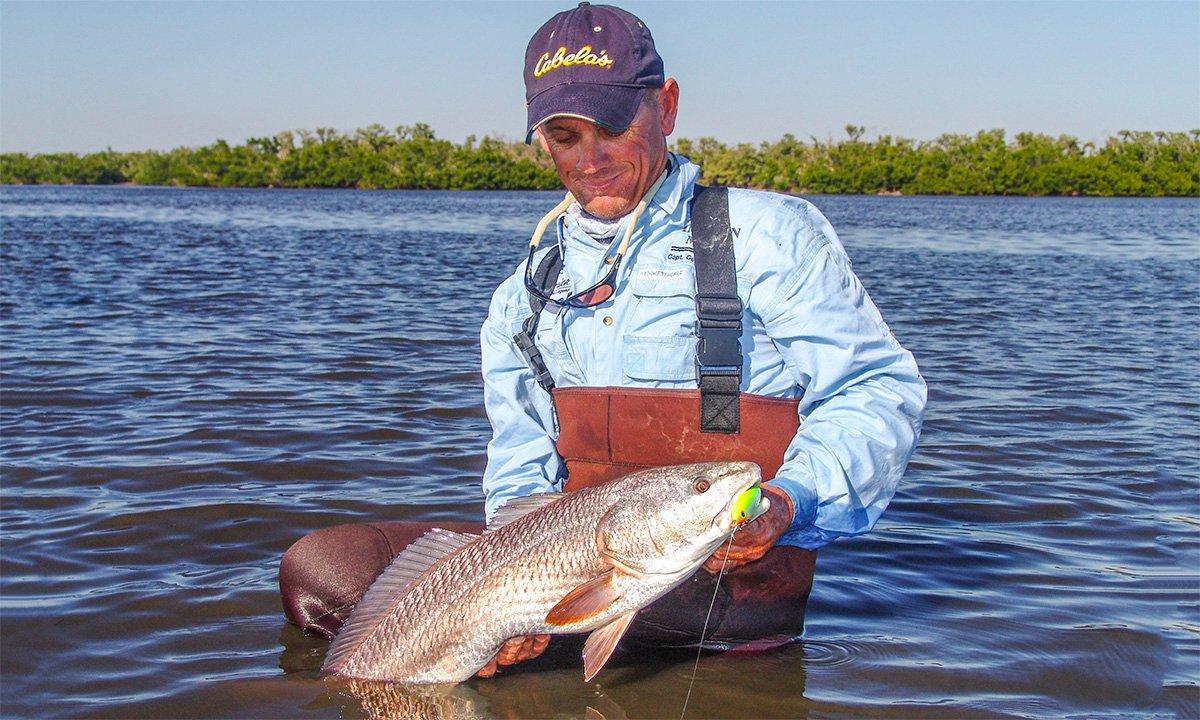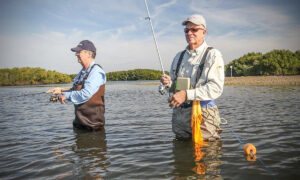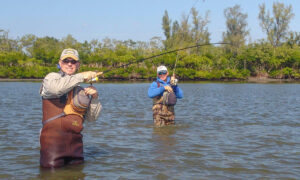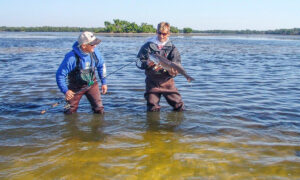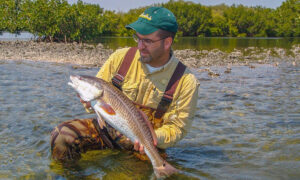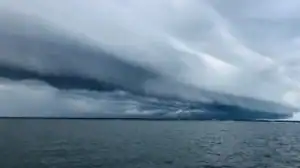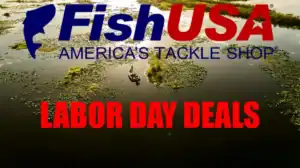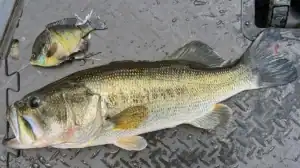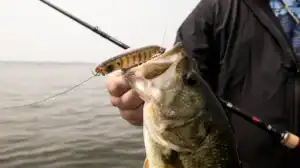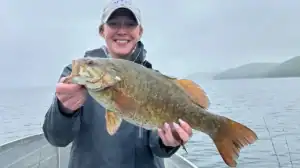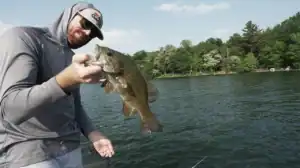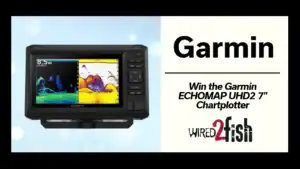Beaches, grass flats, mangrove basins, salt marshes — wade fishing for redfish grants you access to areas you’d never reach by boat, but success hinges on much more than just stepping into saltwater. Effective wading for redfish and other briny gamefish requires a well-planned approach, proper protective wear and effective presentations.
WHY TO WADE
Sure, you can travel farther faster and cover more area in a boat, but wading trades quality for quantity. Strolling inshore shallows allows you to reach secluded areas protected by sandbars, oyster mounds and narrow creeks.
Extreme winter low tides amplify this truth, as “negative lows” (outgoing tides that fall below the area’s average) lay bare hundreds of yards of grass beds. Within these drained expanses, remaining troughs and potholes will hold any redfish, trout or snook that waited too long to exit.
Such captive audiences are inaccessible to motor boats, but waders can sneak right up to the edges. By the time the tide bottoms out, those fish are hungry enough to eat practically any jig, topwater or soft plastic jerkbait you throw into their holding pools.
Often, these honey holes lay deep inside backwater bays and creeks that are too far to reach on foot. The answer — run the boat as far as safely possible, anchor and then wade to the sweet spots.
Other benefits to wade-fishing coastal waters:
Stealth — Fish turn skittish in any shallow scenario, but winter’s gin-clear water heightens their angst and necessitates a low profile.
Aesthetics — Proximity to the habitat you’re fishing indulges your senses with the feel of sand and shell crunching beneath your boots, glimpses of wading birds such as herons, great egrets and roseate spoonbills; and a front row seat to a cabaret of sea life you often overlook from boat level.
DRESS FOR SUCCESS
Let the day’s weather guide your layering plan, but consider a waterproof backpack for holding jackets and hoodies you shed during warmer hours or need when conditions grow colder.
Waders are a must for winter fishing and options are limited only by budget. Lightweight, breathable waders are nice but a sturdy set of neoprenes work fine.
Your main decisions here are thickness and foot style. In mild conditions, 3 millimeter neoprene waders will suffice; but even in Florida waters, a brutal cold spell will leave you shivering in the frigid brine.
Go with 5 mm neoprenes, and you’ll be good to go for whatever conditions you face. Remember, you can roll down the tops of thick waders for warmer periods, but you can’t make thin waders any thicker.
As for foot styles, waders come in boot foot designs, which require no additional food covering, and stocking foot designs, which slip into separate wading boots. Both work well for solid bottoms, but the former presents mobility issues in the softer, mud/grass bottoms that winter fish favor for its heat absorption.
Soft bottom grips the wader’s boot section, and when you try to take a step, your foot slips out. Interrupted balance can lead to a tense moment in the chilly water. The latter option ensures stability with an external wading boot secured by laces or Velcro straps.
For added security, cinch a wading belt around your mid section. If you tumble, this limits water incursion and keeps you from filling your waders with numbing water.
That being said, experienced anglers keep a small knife handy and if the unthinkable occurs, they can quickly cut themselves out of water-filled waders, or at least vent them enough to escape the cold water.
6 TIPS TO WADE FISHING
- Grassy beds equals soft, muddy bottom that’ll challenge your every step. Seek firmer sandy bottoms.
- Oyster bars are also firm, but loose shells can shift. Moreover, sharp edges can slice through waders when kneeling.
- Take caution around the edges of potholes and channels. You may have to high-step it across a deeper trough to reach a desired area, but test each step before entering a channel.
- Likewise, be careful around the edges of channels running out of creeks. These fish highways hold great potential — along with current runs. Avoid a spill by remaining on solid footing.
- When wading broad areas, factor your return hike, along with daylight and energy levels. For long stretches, carry bottled water and light snacks. When in doubt, tie a bow line to your waist and tow the boat for incremental relocations before stretching your wading area.
- When deck space permits, carrying a kayak proves you an option for extending your distance with a lightweight vessel that easily crosses the skinny spots and allows you to instantly transition from boat to foot.
GEAR YOU NEED
Think simplicity. Preparation maximizes opportunity, but experienced waders know that lighter is better. Key items include:
- A 7- to 7 1/2-foot medium spinning combo with 10- to 20-pound braid and about two feet of 20- to 30-pound fluorocarbon leader.
- A small waterproof tackle tray with a selection of jig heads, spoons, topwaters and slow sinking/suspending twitch baits. If you’re using live bait, add hooks, split shots and corks. Stick the tray in the front of your waders. Minimalists might prefer a compact chest pack.
- Flow-through bait bucket (for live bait use).
- Gear belts keep pliers, fish gripper and stringer handy. Most include a spare rod holder, but lacking this feature, stick the spare under the belt or in the back of your waders.
Clearly, wade fishing can be challenging but rewarding. If you’re up for a good cardio workout, fishing on foot can deliver some of the most memorable fishing you’ll ever experience.
